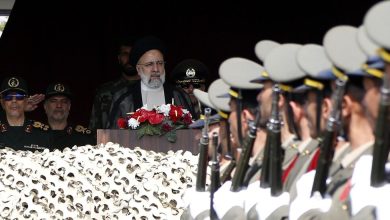King Charles Has Done What Monarchs Before Him Would Not Dare

The most surprising thing about the disclosure that King Charles III has been diagnosed with cancer after less than two years on the throne is the fact that it’s been disclosed at all.
Cancer is common; candor about the British royal family’s heath, not so much. Over the centuries, like many royal families, it has gone to great lengths to hide the condition of the sovereign’s body. Charles’s honesty, as far as it goes, seems to be a sign of his desire to be a different kind of monarch.
A ruling monarch has always been the embodiment of the state, a living metaphor of its health. Just look at Hans Holbein’s 1537 portrait of the six-foot-plus Henry VIII, a robust giant bestriding the world at the peak of his powers. Healthy king, healthy country. It works in reverse, too. Shakespeare — never above a little Tudor propagandizing — turned Richard III, the king from whom Henry’s father grabbed the throne in 1485, into someone with a hunchback, a man so ugly that dogs barked when he passed. Examination of Richard’s body, discovered in ruins under a car park in the English city of Leicester in 2012, showed he simply had scoliosis.
When your body is the state, how do you speak of its inevitable weaknesses and frailties? Historically, you didn’t. Four hundred years after the Tudors, in 1859, Kaiser Wilhelm II, the last German emperor, was born with a withered arm (and probably some brain damage) as a result of a complicated delivery. The idea of a physically disabled heir was unthinkable, especially in a country where the aristocracy defined itself by its military prowess. Wilhelm’s grandfather asked if it was even appropriate to offer congratulations on the birth.
Desperate and frankly weird attempts were made to make the limb work. Wilhelm’s functioning arm was bound to his body when he was learning to walk, in an attempt to force him to use the other one: predictably he fell over a lot. Electric shocks were passed through it. The arm was placed inside the warm carcass of a freshly killed hare, the idea being that the heat of the dead animal would transmute itself into the child’s arm. At the age of 4, as his mother wept, he was regularly strapped into a machine to try to stretch the muscles. Nothing worked. Wilhelm grew up to be difficult, anxious and resentful, though ironically he adapted very well to having only one functioning arm.
Wilhelm’s cousin, Nicholas II, the last czar of Russia, went to extreme lengths to hide the hemophilia of his son and heir, Alexei, and refused to explain the presence of the notorious faith healer Rasputin, whose exploits became a metaphor for the Russian state’s corruption.



